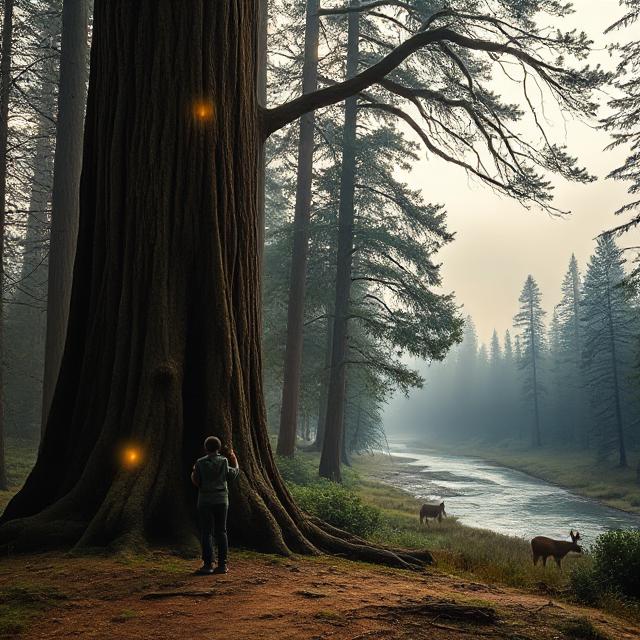
Table of Contents
Environmental Ethics: Do Trees Have Rights?
Environmental ethics challenges us to rethink our moral responsibilities—not just to other humans, but to the entire natural world. Do trees have rights? Do ecosystems deserve ethical protection regardless of their usefulness to humans? These questions push philosophy beyond anthropocentrism (human-centered thinking) and into the broader domain of nonhuman value.
This article explores the field of environmental ethics and investigates one of its most provocative claims: that trees, rivers, and ecosystems might possess rights, moral standing, or even intrinsic worth. From ancient nature worship to modern ecological theory, the question of how we should treat the environment is central to humanity’s future.
I. What Is Environmental Ethics?
Environmental ethics is a branch of philosophy that examines the moral relationship between humans and the natural world. It asks fundamental questions:
- Do non-human entities have moral value?
- Should we preserve nature for its own sake, or just for human benefit?
- Can forests or rivers be “wronged”?
This field emerged prominently in the 1970s, alongside rising ecological awareness and conservation movements. Since then, environmental ethics has grown into a vibrant discipline intersecting philosophy, law, ecology, and activism.
II. Anthropocentrism vs. Ecocentrism
A. Anthropocentrism
The traditional Western view has often been anthropocentric: valuing nature only insofar as it benefits humans. Trees are valuable because they provide oxygen, shade, or wood—not because they have inherent worth.
B. Ecocentrism and Biocentrism
In contrast, ecocentrism holds that ecosystems themselves have moral value. Biocentrism goes further, arguing that all living beings—not just humans—deserve ethical consideration. This shift reframes humans as part of nature rather than its rulers.
III. Do Trees Have Moral Standing?
A. The Idea of Moral Standing
To say something has moral standing means its interests matter morally. If trees have standing, then cutting them down without necessity could be a moral harm—even if no human is directly affected.
B. Philosophical Perspectives
- Aldo Leopold (1949) proposed a “land ethic” where humans are part of a community that includes soil, water, plants, and animals.
- Arne Naess developed the theory of “deep ecology,” emphasizing the intrinsic value of all living beings.
- Christopher Stone, in his famous article “Should Trees Have Standing?” (1972), argued for granting legal rights to natural objects, much like we do for corporations or infants.
IV. Legal Rights for Nature
A. Global Developments
Some legal systems have begun granting rights to nature:
- Ecuador (2008) incorporated rights of nature into its constitution.
- New Zealand granted legal personhood to the Whanganui River.
- India recognized rivers like the Ganges as legal persons (though enforcement remains controversial).
These laws treat ecosystems not merely as resources but as bearers of rights—raising profound ethical questions about agency, responsibility, and legal representation.
B. Implications
If a tree has rights, can it “sue” for deforestation? Who speaks for the forest? These questions push the boundaries of law and ethics into novel territory.
V. Arguments For Giving Nature Rights
- Moral Consistency: If sentience or life grants moral consideration, then trees—being alive—may warrant some ethical status.
- Interconnectedness: Human survival depends on healthy ecosystems. Protecting nature is self-preservation.
- Intrinsic Value: Many people experience awe, reverence, or even spiritual connection to nature, suggesting we intuitively feel it has worth beyond utility.
- Long-Term Thinking: Ethical systems must adapt to account for future generations and the stability of the biosphere.
VI. Counterarguments and Challenges
- Lack of Sentience: Trees don’t think or feel. Critics argue that rights imply interests, and interests require consciousness.
- Practicality: Granting rights to nonhuman entities complicates law and policy.
- Human Stewardship: Some argue that humans have a duty to manage nature wisely, but not to grant it rights.
Despite these challenges, defenders argue that moral imagination must evolve, as it once did for slaves, women, and animals.
VII. Indigenous and Spiritual Views
Many Indigenous philosophies recognize nature as animate and sacred:
- The Lakota speak of the Earth as “Mother.”
- Shinto traditions honor kami (spirits) in rocks, trees, and rivers.
- Hinduism sees divine presence in nature.
These traditions often treat nature as a moral subject, not a passive object. Environmental ethics, in this light, becomes less about innovation and more about remembering older wisdom.
VIII. Environmental Ethics in Practice
A. Climate Policy
Environmental ethics influences decisions on climate change, deforestation, and species protection. If future generations or polar bears have moral worth, policies must reflect that.
B. Ecological Restoration
Projects that restore damaged ecosystems reflect a belief in nature’s right to thrive, not just serve humans.
C. Everyday Ethics
Recycling, conserving water, and supporting green policies are small acts rooted in larger ethical commitments to the Earth.
IX. Conclusion: Rethinking Our Place
Environmental ethics invites us to shift from dominators of nature to participants within it. Whether or not we say trees have “rights,” the ethical move is clear: treat nature with respect, humility, and care.
As climate crises escalate, the question is no longer academic. What kind of relationship do we want with the planet that sustains us? Do trees have rights? Or do we have duties—sacred, legal, or moral—to the world beyond ourselves?
This isn’t just a philosophical debate. It’s a roadmap for survival.
